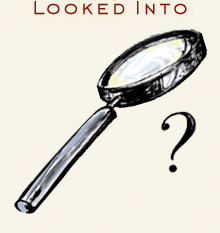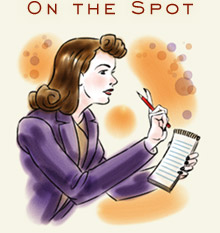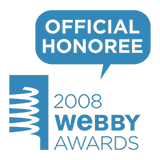Emdashes—Modern Times Between the Lines
The Basics:
About Emdashes | Email us
Ask the Librarians
Best of Emdashes: Hit Parade
A Web Comic: The Wavy Rule
Features & Columns:
Headline Shooter
On the Spot
Looked Into
Sempé Fi: Cover Art
Charles Addams' Big Apple: Amy Hwang's Illustrated Review
Filed under: Looked Into Tagged: Amy Hwang, architect, architecture, Charles Addams, exhibition, Museum of the City of New York, Pollux, reviews

Pollux writes:
Up-and-coming New Yorker cartoonist Amy Hwang has created a review in pictures of an exhibition in the Museum of the City of New York that features the work of the legendary Charles Addams.
Hwang’s illustrated “Addams’s Big Apple” reveals not only her fascination with Addams’ genius, artistic methods, and relationship with the urban landscape, but also Hwang’s considerable talents.
Hwang, who is not only a cartoonist but also an architect, transforms her visit into an artistic diary that showcases her own irreverent humor as well as Addams’ use of the city in his cartoons (Addams used accurate architectural elements in his work).
The Addams exhibition will run until June 8, 2010. (continued)
Can Adam Gopnik's Maturity Countenance Chase Utley's Glee?
Filed under: The Squib Report Tagged: Adam Gopnik, baseball, Ben McGrath, Chase Utley, Malcolm Gladwell, Richard Brody, sports, Star Wars

Martin Schneider writes:
There's been an interesting back and forth on the New Yorker blog pages about Adam Gopnik's decision to forsake baseball. To recap: Gopnik announced that he no longer much likes baseball, Richard Brody and Ben McGrath responded, then Gopnik wrote again, and so forth. The exchange may not even be over. The best way to follow it all may be to go to the Sporting Scene section and read them in order.
All parties have been intelligent in their advocacy, and I write not so much to correct Brody and McGrath as to supplement them. I find Gopnik's line of thinking not very convincing and even a bit disingenuous, and since I am a big baseball fan, I thought I would explain why.
Yesterday I attended the home opener for the Cleveland Indians in Progressive Park. The Rangers beat the Indians, 4 to 2, in 10 innings, alas. I was (continued)
Although We Are No Longer a Blog Exclusively About The New Yorker
Filed under: Looked Into Tagged: Barack Obama, books, David Remnick, events, interviews, New Yorker, Ta-Nehisi Coates, Washington Post

…we continue to be admirers of the magazine and many of its contributors, naturally. We’ll still be posting about New Yorker-related stuff, just alongside a wider range of other subjects. Here’s the transcript of today’s Washington Post live Q&A with David Remnick about his new book, The Bridge: The Life and Rise of Barack Obama. Martin wrote up the recent New York Public Library conversation between Remnick and Ta-Nehisi Coates.
Here’s a snappy answer to a stupid (or maybe just absurdly vague) question:Johannesburg, South Africa: Shortly after President Obama was inaugurated the U.S. media let slip that directly after law school President Obama encountered a dark cloud. The insinuation was that he had fallen into bad company. And then gone on to a meteorically successful private career in Law. Although I haven’t read your book, I would be interested to hear what you say about this.And a taste of Remnick’s reading life:
David Remnick: It doesn’t sound like reality to me.
Delaware: Your book, Lenin’s Tomb, is one of my favorite books ever. I initially read it for a Russian history class in college. I’ve read it at least twice since then, each time more impressed with how prescient and cogently organized it is. I’m looking forward to picking up The Bridge this weekend. Wondering, what do you enjoy reading (besides The New Yorker)?—E.G. (continued)
David Remnick: Thanks so much! I really appreciate that. I was delighted to see that my old friend, David Hoffman, at the Post just won a Pulitzer for his extraordinary book on secret Soviet weapons programs. The strangeness, the darkness, and the complexity of the world under Soviet rule remains a subject of great fascination for me, so that is one area where I try to keep up. And I try to read and re-read work by writers like Josef Brodsky, and Nadezhda Mandelstam, and Anna Akhmatova, as much as I can. I read, both for my work and my life (sometimes I wonder about the differene) pretty omnivorously. Not long ago I finished a slender, profound book about Jewish history called “Zakhor” by Yerushalmi and right now I am reading a couple of novels: one by David Grossman, called To the End of the Land, and a book of short stories by Denis Johnson. There is a huge new history of Christianity by MacDiarmid that just landed on my desk with a thud, but I am determined to read it.
The Wavy Rule, a Daily Comic by Pollux: Kingdom of Heaven
Filed under: The Wavy Rule Tagged: cartoons, cinema, comics, God, Orlando Bloom, Pollux, religion, The Wavy Rule, YouTube

Click on the image for a detailed view! (continued)
Thirtysomething: Our Past, Our Future
Filed under: Looked Into Tagged: media, Nicholas Carr, The Atlantic, thirtysomething, TV

Emily Gordon transcribes:
From season three, “Legacy,” which aired Oct. 31, 1989:
Lucy, Synergy magazine editor, to Hope, writer: It’s times like this that make me glad I’m in media. This is a remarkable piece, Hope.
Kit, another editor: Lucy and I were talking about it all morning.
Hope: I’m glad you liked the article.
Lucy: With a little work, we think it’ll make a powerful article.
Hope: Uh—it already is an article.
Kit: We mean an article for us, an article for the NEW Synergy.
Lucy: You see, one of the things we’re very anxious to do is to address the problem of—digestibility.
Kit: For a consumer magazine to succeed in reaching out to the public, it must be scannable. It has to present itself in a quick, visual, high-impact way that’s readily absorbable and instantly usable.
Hope: Are we talking about an article or an antiperspirant?
The Net’s influence doesn’t end at the edges of a computer screen, either. As people’s minds become attuned to the crazy quilt of Internet media, traditional media have to adapt to the audience’s new expectations. Television programs add text crawls and pop-up ads, and magazines and newspapers shorten their articles, introduce capsule summaries, and crowd their pages with easy-to-browse info-snippets. When, in March of this year, The New York Times decided to devote the second and third pages of every edition toBy the way, so that I could reread Carr’s relatively longish piece, I found myself doing the following to keep my brain on track: 1) magnifying the text to a gigantic size so that the ads and sidebars in the margins were forced off the screen; 2) hiding my OS X dock so I wasn’t distracted by the idea of all the other applications I could be jumping to, and 3) turning off NPR. I read in focused peace until…I reached the paragraph I quoted above to switch Safari tabs and amend this post. Curses! (continued)
article abstracts, its design director, Tom Bodkin, explained that the “shortcuts” would give harried readers a quick “taste” of the day’s news, sparing them the “less efficient” method of actually turning the pages and reading the articles. Old media have little choice but to play by the new-media rules.
The Wavy Rule, a Daily Comic by Pollux: To the Lions
Filed under: The Wavy Rule Tagged: cartoons, comics, lion, Pollux, tea party, The Wavy Rule

Click on the image for a detailed view! (continued)
Sempé Fi: Paw in the Family
Filed under: Sempé Fi Tagged: art, Bergdorf Goodman, covers, Easter, Easter Bunny, Elle, Grant Wood, Hunt Slonem, Joe Zee, Kathy Osborn, Pattern Pulp, Pollux, rabbit, Shayna Kulik

Pollux writes:
Did you know that there are about a hundred and fifty different rabbit coat colors? The color of rabbit fur can range from orange to opal agouti, from chocolate tortoiseshell to frosted pearl.
Some of these colors appear in Kathy Osborn’s cover for the April 5, 2010 of The New Yorker, which is awash with a gouache-based array of various members of an extended rabbit family.
The Easter Bunny always seemed to me a lonely figure, a leporid deity condemned to roam the earth with an incongruous basket of eggs and chocolate. Usually he wears a big bow as well. (continued)
Bluegrass, Matt Diffee, Mark Singer, Zachary Kanin: This Sunday in NYC!
Filed under: On the Spot Tagged: bluegrass, Carolita Johnson, cartoons, comedy, Drew Dernavich, Emily Flake, events, Mark Singer, Matt Diffee, music, Zachary Kanin

Emily Gordon writes:
The Steam-Powered Hour is one of the best variety shows going in New York. The combination of high-quality bluegrass, New Yorker cartoonists like Drew Dernavich, Carolita Johnson (who drew the merrily sciurine poster above) and Emily Flake drawing live on stage, comedy, storytelling, and spontaneous mass acoustic jams make it a hootenanny-salon you have to experience, trust me.
It’s a monthly party, but it’s taking a break for the summer, so make sure to come to the next two! Especially this one, because Citigrass are some of the rousingest, rollickingest pickers I’ve ever had the pleasure of hearing.
From the Steamers’ latest email:
In April, The Steam Powered Hour welcomes back Citigrass, winners of this year’s Battle of the Hardly Strictly Bluegrass Bands. Also, more bluegrass goodness with Thomas Bailey and the Aristocrats, a story by The New Yorker staff writer Mark Singer and cartoonist Zachary Kanin. Plus, plenty more surprises. Hosted as usual by New Yorker cartoonist Matt Diffee.
April 11th, 8pm
Nuyorican Poet’s Cafe
236 East 3rd Street Between Ave B & C
New York City
Tickets are $15 at the door. Get ‘em for $10 in advance at http://www.nuyorican.org.
You can follow The Steam Powered Hour on Twitter and on Facebook. (continued)
The Wavy Rule, a Daily Comic by Pollux: The Future of Blogging
Filed under: The Wavy Rule Tagged: blog, cartoons, comics, conference, Pollux, The Wavy Rule

Click on the image for a detailed view! (continued)





